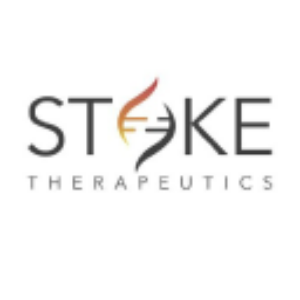Stoke Therapeutics Presents New Data That Demonstrate Tango Antisense Oligonucleotides (ASOs) Increase OPA1 Protein Production and Improve Mitochondrial Function in Cells Derived From Patients With Autosomal Dominant Optic Atrophy (ADOA)
Stoke Therapeutics, Inc. (Nasdaq: STOK), a biotechnology company dedicated to addressing the underlying cause of severe diseases by up-regulating protein expression with RNA-based medicines, today announced new preclinical data demonstrating in-vitro protein upregulation and improved mitochondrial function in OPA1 protein-deficient fibroblasts derived from patients with ADOA. OPA1 protein deficiency is the primary cause of ADOA and reduced OPA1 levels are associated with impaired mitochondrial function. The data will be presented today at The Association for Research in Vision and Ophthalmology (ARVO) 2021 Annual Meeting and at the American Society of Gene and Cell Therapy (ASGCT) Annual Meeting on Tuesday, May 11, 2021 from 8:00 AM – 10:00 AM Eastern.
“These findings are important because they offer the first evidence from patient cells that our TANGO approach can address the underlying cause of ADOA by upregulating OPA1 protein production and increasing mitochondrial function,” said Edward M. Kaye, M.D., Chief Executive Officer of Stoke Therapeutics. “ADOA represents a strong fit for Stoke’s science and our strategy: targeting severe genetic diseases that are caused by protein deficiencies and that have limited, if any treatment options. A disease-modifying approach would represent a significant advancement in the treatment of this disease.”
ADOA affects approximately one in 30,000 people globally with a higher incidence in Denmark of one in 10,000 due to a founder effect. An estimated
“By demonstrating an improvement in the mitochondrial function of patient cells across different OPA1 mutations, the data suggest that ASO mediated increase in OPA1 could be sufficient to slow or reduce disease progression in a mutation-independent manner,” said Gene Liau, Ph.D., Chief Scientific Officer of Stoke Therapeutics.
The data presented today provide in-vitro proof-of-concept for TANGO ASOs in ADOA patient fibroblasts. Highlights from today’s presentation include new data that demonstrate ADOA patient fibroblast cell lines treated with TANGO ASOs exhibit:
- Reduced non-productive exon inclusion and increased total OPA1 mRNA expression in three patient fibroblast cell lines with different mutations;
-
Increased expression of multiple OPA1 protein isoforms by ~
35% to47% ; and - A dose-dependent improvement in mitochondrial bioenergetics.
Details of today’s presentation are as follows:
Presentation Title: Antisense oligonucleotide mediated increase in OPA1 improves mitochondrial function in fibroblasts derived from patients with autosomal dominant optic atrophy (ADOA)
Session Date & Time: Tuesday, May 4, 2021; 2:15 p.m. – 3:45 p.m. E.T.
Session Title: Gene therapy in ocular diseases
Presenter: Aditya Venkatesh, Ph.D., Senior Scientist, Stoke Therapeutics
The presentation at ARVO is now available online on the Events and Presentations section of Stoke’s website at https://investor.stoketherapeutics.com/.
About Autosomal Dominant Optic Atrophy (ADOA)
Autosomal dominant optic atrophy (ADOA) is the most common inherited optic nerve disorder. It is a rare disease that causes progressive and irreversible vision loss in both eyes starting in the first decade of life. Symptoms typically begin between the ages of 4 and 6 years old, affecting males and females equally. The severity of the condition by adolescence reflects the overall level of visual function to be expected throughout most of the individual’s adult life. Roughly half of people with ADOA fail driving standards and up to
About TANGO
TANGO (Targeted Augmentation of Nuclear Gene Output) is Stoke’s proprietary research platform. Stoke’s initial application for this technology are diseases in which one copy of a gene functions normally and the other is mutated, also called haploinsufficiencies. In these cases, the mutated gene does not produce its share of protein, so the body does not function normally. Using the TANGO approach







